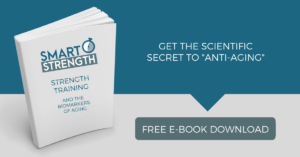Short version:
- Exercise is specific: challenging the muscles in a very targeted manner to stimulate a positive physiological adaptation that serves to enhance fitness no matter the task.
- Physical activity is general: body movement produced by muscle action that is a means to some other end.
Have you ever been confused by headlines saying that you need “3-5 hours of exercise per week” to maximize health outcomes?
Until I went to school, I was too! The problem, and where the confusion lies, is that exercise and physical activity are often lumped together but in reality they are not the same thing.
Defining our terms
The first definition of exercise I learned was a doozy:
“Exercise is the process whereby the body performs work of a demanding nature, in accordance with muscle and joint function, in a clinically-controlled environment, within the constraints of safety, meaningfully loading the muscular structures to inroad their strength levels to stimulate a growth mechanism within minimal time.” – Ken Hutchins
In trying to explain this to clients, their eyes would glaze over. However, it is still the version that rings in my head while assessing the value of a potential exercise.
My friend and colleague Doug Mcguff MD offered a similar take that allows for a quicker understanding:
Exercise is a specific activity that stimulates a positive physiological adaptation that serves to enhance fitness without undermining health.
Specific…physiological adaptation(s)…without undermining health. This is where the good stuff is! Everything a person is after when they start training is RIGHT there: build a stronger body without undermining health.
Now juxtapose that with the definition of physical activity:
Any bodily movement produced by skeletal muscle that results in energy expenditure (e.g. it is associated with occupation, leisure time, household chores, and sport).
See the problem?
Study Limitations
Now, the “3-5 hours per week” idea comes from studies that are looking at large populations of people and surveying their activity patterns. So while people who move more tend to be healthier, the research design cannot determine if they are healthy because they are moving more, or if they’re moving more because they’re healthy. That’s not “3-5 hours” of exercise, but what happens is that the media uses exercise & physical activity interchangeably, when they’re decidedly not!
In our experience at Smart Strength, the stronger you become, the more you move because it feels good to move. The metaphor I use is: when you build the Ferrari, you don’t drive it in the school zone! Living in Austin means we have access to amazing year round activities.
If you ask me, I’d rather do my Smart Strength workout to safely and efficiently get all of the health and fitness benefits possible. A strong, pain-free body will itch to take advantage of everything life has to offer, which includes lots of physical activity!
